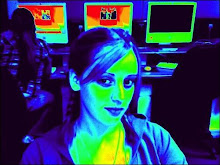EVALUATION ON LECTURES
1/6.
Timeline- of the body in contact with textiles as a personal life chronology which could be a starting point or concluding point.
In this first lecture we worked in small groups and were given the task of creating a timeline of textiles. This made us consider the range of fashions we come across in or day to day lives. This activity inspired me into taking more notice of the textiles around me and how I could be useful in my studies.
2/6.
Tapestries
This lecture was all about tapestries. Many tapestries are now extremely famous as most date back to medieval times. Before technology, this was the way our ancestors put down stories that show the history into where we originate. By putting down markings and symbols we are able to get an idea of what it was like in those times.
Tapestries take a lot of time and effort and got thought many stages in the process of being made such as being designed, being manufactured and being decorated. Tapestries are usually landscape pieces that scroll out to revile the decoration inside.
Top of Form
Bottom of Form
A detail from one of the famous medieval unicorn tapestries currently hanging at The Cloisters, in Fort Tryon Park, New York City.
3/6.
Extended body
I found this lecture one of the most interesting. We look at Rebecca horn’s work and how she is interested in looking at body extensions.
This is an example of when she extended her fingers. we were show a short video on how she exhibited this and I found it quite moving and strange.
We were then asked to think about what Rebecca would use and extend if she was alive today bearing in mind she always used and experimented with new materials.
My idea was EXTENDED LEGS.
I would chose to extend my legs if I could so that I could walk past everything and then nothing would get in my way. The modern material I’d use is actually an old material but I was thinking along the theme of recycling which is a big modern subject that the planet is taking into consideration. In order to make my new legs I would use tyres witch would have been an old material to the previous with holder but a new one to me.
4/6
Body Art/modification.
This lecture was on body modification found it really interesting looking at the typs or body are there is. The type of things we looked at were:-
Tattoos, piercings, ear plugs, tribal neck stretching and silicon implants.these images show examples of what we looked at.
5/6.
Art in the landscape-Land Art / Earth Art / Environmental Art
Land art was most popular in the 60’s.its artists use the landscape and work with the environment to make amazing art works. A lot of these are not so noticeable when on land but have big impact when u look at them from above. This is because they are made to a very large scale.
CROP CIRCLES are very popular examples of land art. These are usually round symmetrical designs and are used as a way of protesting or sending out a message. They are bold and accurate designs.
This movement is relatively modern but an old example that could be classed as environmental art is Stonehenge. This is a group of large weathered stones that have been set in a circle and have stood there 4 many years. The meaning or message behind them has not yet been discovered but is said to be liked with time and the sun.
6/6
Time based art gorilla art and wearable art.
Time based art is like to the land art we looked at and is done using natural resources and set in natural sorroundings. This is an example by Andy Goldsworthy and was done using leaves to cover a large stone. It has quite an impact.
Other time based art is done using technology and is a new movement.
This lecture was split into 3 and we also looked at GORILLA ART. This is art that is usually used in showing political messages in public places by producing art work such as banners and posters. We were introduced to the work of an artist called Banksy. I was inspired to this graffiti type art.
WEARABLE TECHNOLOGY is an extremely new movement and is done using new technology and computing. We looked at the work of Tony Oursler who use projectors to transfer images of his face onto dolls and spoke to show his own personal thoughts.
Wednesday, 18 March 2009
Tuesday, 17 March 2009
Subscribe to:
Comments (Atom)
